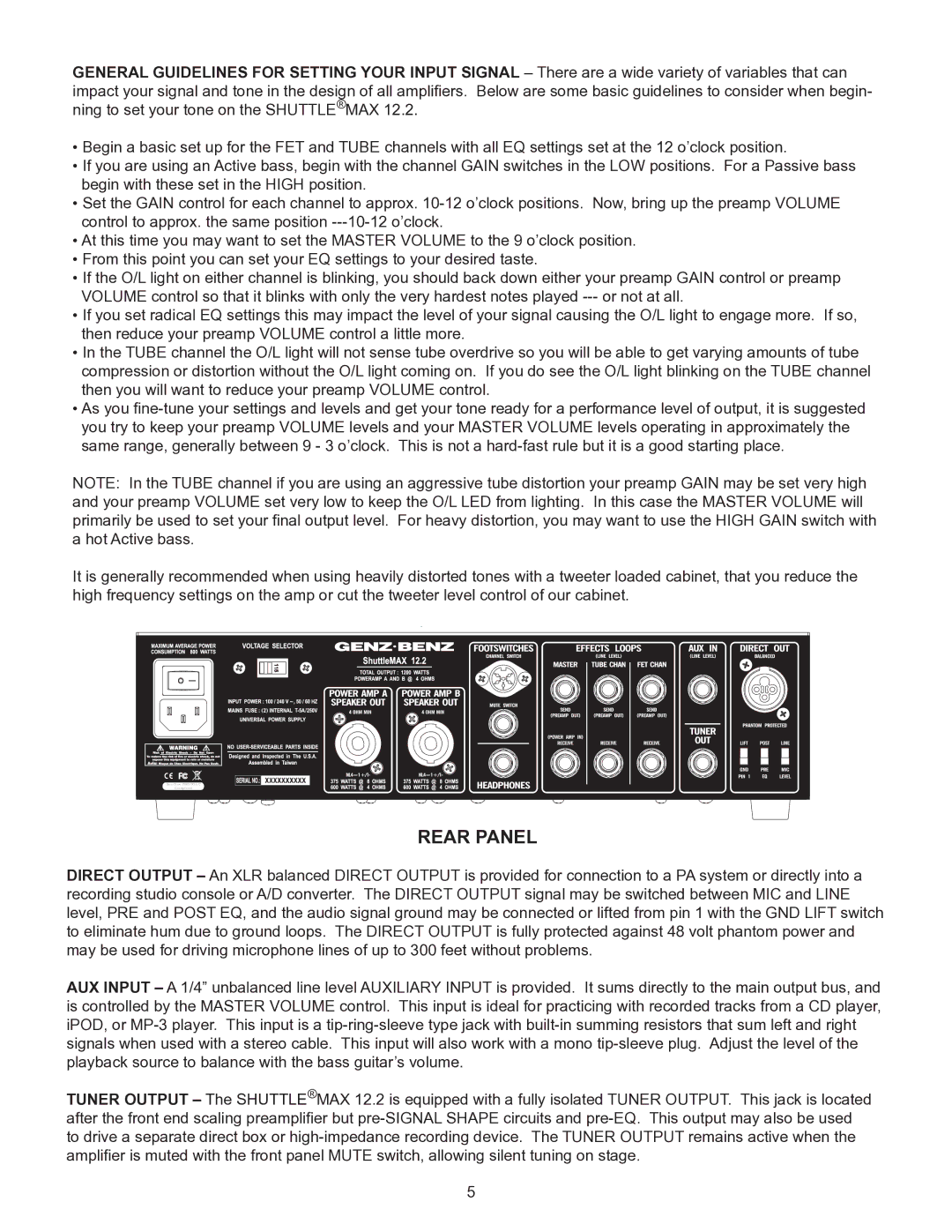
GENERAL GUIDELINES FOR SETTING YOUR INPUT SIGNAL – There are a wide variety of variables that can impact your signal and tone in the design of all amplifiers. Below are some basic guidelines to consider when begin- ning to set your tone on the SHUTTLE®MAX 12.2.
•Begin a basic set up for the FET and TUBE channels with all EQ settings set at the 12 o’clock position.
•If you are using an Active bass, begin with the channel GAIN switches in the LOW positions. For a Passive bass begin with these set in the HIGH position.
•Set the GAIN control for each channel to approx.
•At this time you may want to set the MASTER VOLUME to the 9 o’clock position.
•From this point you can set your EQ settings to your desired taste.
•If the O/L light on either channel is blinking, you should back down either your preamp GAIN control or preamp VOLUME control so that it blinks with only the very hardest notes played
•If you set radical EQ settings this may impact the level of your signal causing the O/L light to engage more. If so, then reduce your preamp VOLUME control a little more.
•In the TUBE channel the O/L light will not sense tube overdrive so you will be able to get varying amounts of tube compression or distortion without the O/L light coming on. If you do see the O/L light blinking on the TUBE channel then you will want to reduce your preamp VOLUME control.
•As you
NOTE: In the TUBE channel if you are using an aggressive tube distortion your preamp GAIN may be set very high and your preamp VOLUME set very low to keep the O/L LED from lighting. In this case the MASTER VOLUME will primarily be used to set your final output level. For heavy distortion, you may want to use the HIGH GAIN switch with a hot Active bass.
It is generally recommended when using heavily distorted tones with a tweeter loaded cabinet, that you reduce the high frequency settings on the amp or cut the tweeter level control of our cabinet.
REAR PANEL
DIRECT OUTPUT – An XLR balanced DIRECT OUTPUT is provided for connection to a PA system or directly into a recording studio console or A/D converter. The DIRECT OUTPUT signal may be switched between MIC and LINE level, PRE and POST EQ, and the audio signal ground may be connected or lifted from pin 1 with the GND LIFT switch to eliminate hum due to ground loops. The DIRECT OUTPUT is fully protected against 48 volt phantom power and may be used for driving microphone lines of up to 300 feet without problems.
AUX INPUT – A 1/4” unbalanced line level AUXILIARY INPUT is provided. It sums directly to the main output bus, and is controlled by the MASTER VOLUME control. This input is ideal for practicing with recorded tracks from a CD player, iPOD, or
TUNER OUTPUT – The SHUTTLE®MAX 12.2 is equipped with a fully isolated TUNER OUTPUT. This jack is located after the front end scaling preamplifier but
